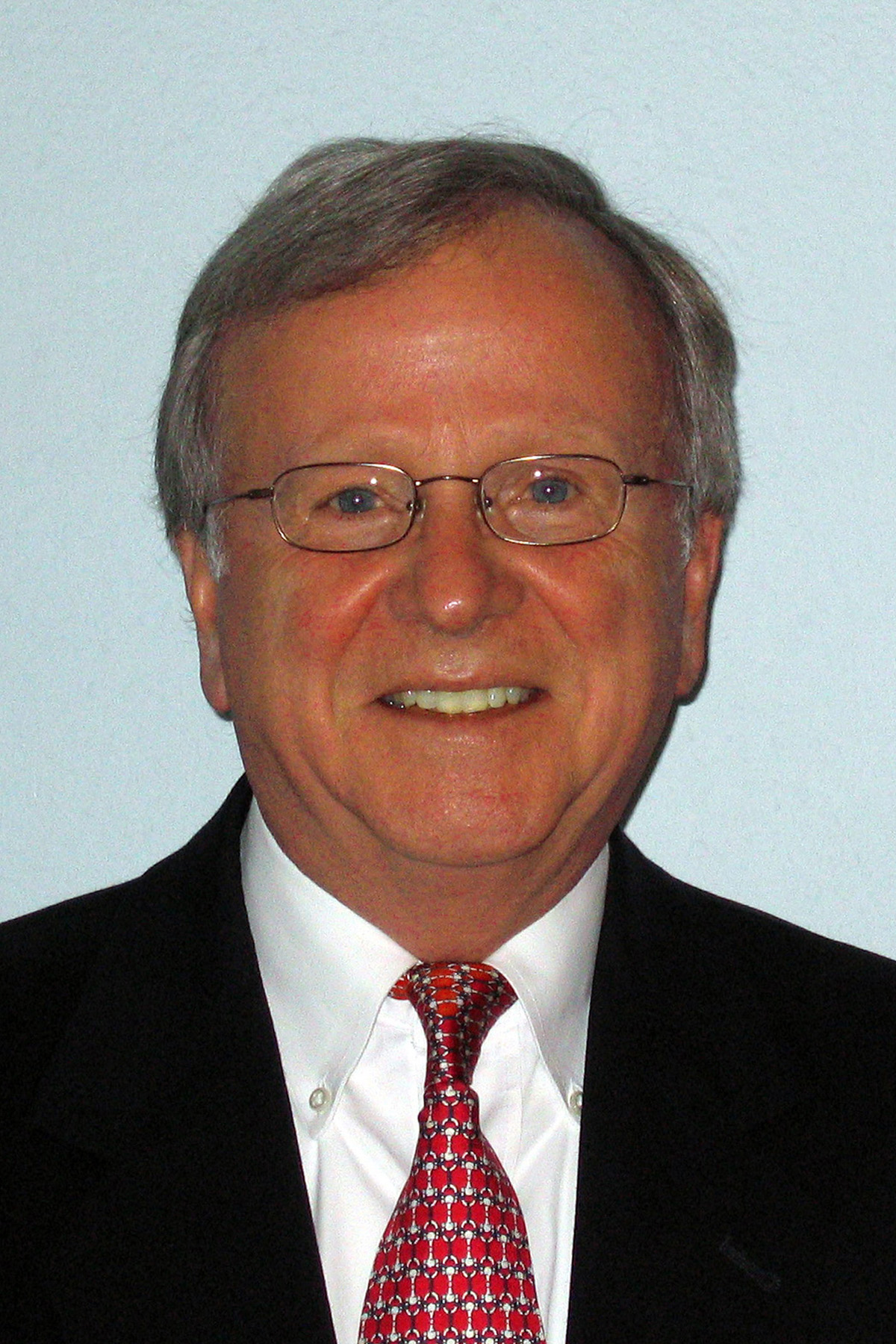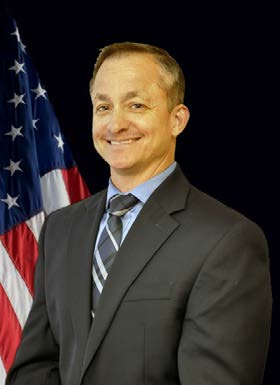
|
2019 WInnComm Speakers Wednesday, 20 NovemberKeynotes:
"Modular Radio Architecture – Enabling Commercial Technology for DoD Open Systems Architecture Platforms" Mr. Mathew “Mat” D. Guerrieri assumed the duties of Deputy Director of the Joint Tactical Networking Center (JTNC) in October 2018. He is the principal advisor to the JTNC Director in the development of policies, procedures, and effective management in all areas of risk, compliance, communications, governance, process improvement, and strategic oversight of the organization. He provides JTNC leadership and direction in satisfying all assigned mission requirements while managing and coordinating all JTNC staffing requirements, internal and external communications, and policy development. Previously, Mr. Guerrieri served as an Assistant Program Manager for Engineering (APM-E) with Naval Information Warfare Systems Command (NAVWAR) 5.0. Mr. Guerrieri’s experience in acquisition and program management began at the United States Army Training and Doctrine Command (TRADOC) where he served as the Assistant Capabilities Manager for Sensor Processing at Fort Huachuca, Arizona. He also served as the Brigade Integration and Technology Officer for the 407th Army Field Support Brigade at Fort Hood, Texas. Soon after, he was selected as a RAND Fellow with service in Santa Monica, California. After completing the fellowship, Mr. Guerrieri served in the Army’s Global Positioning Systems Division for Program Executive Officer, Intelligence, Electronic Warfare, and Sensors at Los Angeles Air Force Base. Mr. Guerrieri’s final service tour was with the Joint Program Executive Office Joint Tactical Radio System (JPEO JTRS) as the product manager for networking waveforms. Mr. Guerrieri has also earned a Master of Science in Engineering Management from the Missouri University of Science and Technology, a Master of Science in Environmental Engineering from the University of Florida, and is a graduate of the Army Command and General Staff College. He is a licensed Professional Engineer, a certified Black Belt in Lean Six Sigma, a certified Project Management Professional (PMP), is Level III certified in Program Management and Engineering, and earned a professional certificate in Model Based Systems Engineering from the Massachusetts Institute of Technology.

"Scarcity to Abundance: Fueling the 5G Wireless Ecosystem" Michael A. Calabrese directs the Wireless Future Program at New America’s Open Technology Institute, a non-profit think tank based in Washington, D.C. He develops and advocates policies to promote ubiquitous, fast and affordable wireless broadband connectivity, including the reallocation of more prime spectrum for unlicensed access, next generation Wi-Fi, and dynamic spectrum sharing. Calabrese has served on the U.S. Department of Commerce Spectrum Management Advisory Committee (CSMAC) since 2009 and as an Invited Expert on President Obama’s Council of Advisors on Science and Technology (PCAST) spectrum reform working group during 2011-2012. In 2018 the WinnForum presented Calabrese with the organization’s Vanu Bose Award for Leadership in Wireless Innovation. Calabrese has previously served as Vice President of New America (2003-2010), General Counsel of the Congressional Joint Economic Committee, director of domestic policy at the Center for National Policy, and as a counsel at the national AFL-CIO. He is a graduate of Stanford Law and Business Schools (JD/MBA) and of Harvard College. Keynote abstract: The FCC is on pace to auction a record amount of spectrum for 5G, with nearly all of it fashioned to meet the business model of very wide area mobile carriers. However, as CBRS is demonstrating, there is demand by a wide variety of market entrants and individual enterprises for localized spectrum access on both a licensed (interference protected) and unlicensed basis. As CBRS takes off, it will become increasingly clear that the technical and policy groundwork is in place to unlock capacity in many other underutilized bands – and to extend CBRS itself. Automated frequency coordination, sensing and a broad “use-it-or-share-it” approach to dynamic spectrum sharing are on the cusp of turning the perception of scarcity into a far greater abundance of wireless bandwidth for mobile, fixed and end-user driven IoT networks.  "National Policy for Spectrum Sharing" "National Policy for Spectrum Sharing"Scott Patrick, Executive Director, Office of Spectrum Management, NTIA Scott Patrick helps NTIA’s work on national and international spectrum policy issues as well as management of federal agency spectrum. OSM is responsible for frequency assignment, certification, and other strategic planning functions, including development of approaches to spectrum sharing. Before joining NTIA last month, Patrick was a telecom and technology attorney at the law firm of Baker Hostetler, counseling wireless, cable, broadcast, and broadband companies. Prior to that, he had been an attorney in the FCC’s Wireless Bureau. He has a master’s degree in electrical engineering, and his first job was at the Naval Research Lab where he helped develop fiber optic electromagnetic field sensors. Invited Presentation "Impact of Interference Avoidance Strategies on Offload Network Aggregate Capacity"
Thursday, 21 November
Keynotes: 
"5G in Midband Spectrum" Milo Medin has been part of the Internet development community for more than 25 years. He is currently the vice president of wireless services at Google. Prior to joining Google in 2010, he was founder and CTO of M2Z Networks, a company that sought to deploy a national broadband wireless network system, and before then he was cofounder and the Chief Technology Officer of Excite@Home, where he led the development of the company's national infrastructure, and helped deliver the first large scale residential broadband access service in partnership with major cable operators, including the development of the DOCSIS cable modem standard. Earlier, Milo worked at NASA's Ames Research Center, where he developed the first peering point between backbone networks, and managed primary west coast interconnect for the Internet, and architected and managed the global NASA Science Internet, including the deployment of the first Internet connections to a number of countries around the world. Milo majored in computer science at UC Berkeley. He has participated in a number of public policy forums, including two National Academy of Sciences panels, given testimony in Congress and before the Federal Communications Commission on Broadband technology policy, and served on the PCAST working group on Spectrum Sharing. He holds several patents in the field of network access technology, and sits on the FCC’s Technical Advisory Committee. He has been married to his wife Catherine for 14 years, and has 4 small children, and lives in Redwood City, CA.
Anupam Upadhyaya is Senior Director of Product Management for Cisco Enterprise Wireless and is responsible for Cisco Enterprise Wireless access points, Controllers and platform software. Prior to this he was responsible for the product roadmap and rollout of Cisco’s Access switching portfolio which generates $6B annually. He has been instrumental in launching the catalyst 9K switching and wireless platforms including Catalyst 9300,9800 and the 9100 11ax Aps and moving the Enterprise business to a recurring software business. Anupam has a diverse background, with 20 years of experience spanning product management, engineering and market strategy in diverse technologies such as wireless, switching and routing. Anupam joined Cisco from Aerohive where he drove the Cloud and Branch on Demand strategy for Aerohive, leading to successful IPO. Prior to Aerohive Anupam led Aruba’s wireless branch strategy and brought Aruba Instant to market. Prior to that Anupam help multiple product management and engineering positions at Cisco and Wipro. Anupam has an MBA in marketing and finance from SCU, and a Bachelors in Computer Science from IIT, Varanasi. 
6 GHz Incumbent Perspective George Kizer is an independent telecommunications consultant. Over his forty plus years in the Telecommunications industry, George’s roles have included Systems Engineer, Project Manager and Product Manager with Collins Radio, Rockwell International and Alcatel as well as consulting with the major telecommunications operators and vendors. He has authored two microwave books and contributed to another. He is Editor for Wiley IEEE Series on RF and Microwave, President, National Spectrum Management Association (NSMA), Chairman, TIA TR-45 Working Group for Microwave Systems, former Chairman, TIA Fixed Point-to-Point Microwave Section and currently chairman of the Technical Committee of the Fixed Wireless Communications Coalition (FWCC). George and his wife Anne reside in Plano, Texas, with their two dogs, Jax and Zoey. George and Anne have two children and two grandchildren. Outside interests include tennis, reading, writing and travel. |

 5G and 6GHz Industry Perspective
5G and 6GHz Industry Perspective